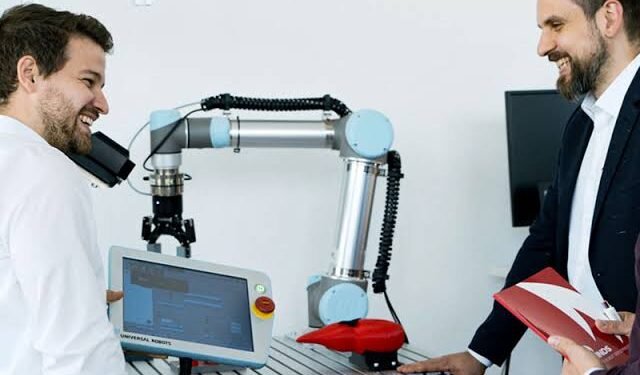CAD software is very useful in today’s world for designing and drafting parts and sub-systems required for robotics and automation applications. CAD enables engineers and designers to draw plans and models in 2D and 3D to depict the several parts and assemblies required in these meticulous projects. Computer accuracy and speed enhance the ability to create models and prototypes through rapid prototyping and analysis.
Contents
- 1 Designing and Drafting Principles for Robotics
- 1.1 Related posts
- 1.2 How Agentic AI is Redefining Automation in the UK
- 1.3 Why Every Traveler Needs a Global SIM Card for Seamless Connectivity
- 1.4 How to Find Free Proxy Servers in Laos: A Comprehensive Guide
- 1.5 Importance of Performance Testing of ERPs
- 1.6 How MICR Printers Streamline Operations in the Banking Sector
- 1.7 How Technology is Revolutionizing Aircraft Maintenance
- 1.8 A Guide On All You Need To Know About VY6YS
- 2 Leveraging 2D Drafting Services
- 3 Integrating Millwork Estimation Services in CAD
- 4 Advanced CAD Techniques for Robotics Applications
- 5 Future Innovations and Trends in CAD for Automation
- 6 Conclusion
Designing and Drafting Principles for Robotics
In particular, when designing drafting parts and assemblies that are likely to be incorporated in robots in CAD, one must adhere to the following guidelines. Modularity must be established to allow a component to be replaced or upgraded easily. This is especially because it becomes easier to order for the same brand and model and maintain the consistency of the hardware across the systems. Design for manufacturability focuses on how the product must be designed to support the available fabrication technology. Fillets and rounds are used to reduce stress to minimize stress concentrations. Conveying detailed annotations and adhering to drafting guidelines in creating drawings results in clearer and less ambiguous representations. It is easy to spend a few minutes now mapping out components to fit together later in the way that the final form performs well.
Leveraging 2D Drafting Services
Even though 3D modeling is widely used today, 2D CAD Drafting Services remain crucial in robotics. Projected views are required for component manufacturing and assembly. It gives details on how to machine a particular part as per the desired specifications. They help to ensure quality, as the results of as-built parts are compared to the drawings. Since robotics has modules of different sizes, dimensioning in 2D creates easy documentation and visualization at the large scale and small scale. Outsourcing professional CAD drafting services provides companies with opportunities to transfer this extensive paperwork to specialists while staying afloat.
Integrating Millwork Estimation Services in CAD
Millwork Estimating Services, in this context, implies wooden work done for robotics projects that are done in a certain way to fit the project. This comprises the fabrication of mounts, chassis, enclosures, panels from green lumber, and sheet goods. CAD is a useful tool for the accurate modeling of organic forms of wooden products. When using both CAD and millwork, it is convenient as it enables one to get cut lists, take-off quantities, and costs from the models. Millwork estimation services might also assist in delivering accurate costs for architectural timber products and how material ordering is accomplished to minimize loss. Since CAD files can communicate directly with specific CNC machines, there is little data degradation from designing the product to producing it.
Advanced CAD Techniques for Robotics Applications
Numerical control technology also has a significant impact on the creation of robotic design. Such versatility in design enables the engineers to perform a series of alterations on the parameters that define the part’s features and characteristics, such as dimensions and hole patterns, instead of redesigning the part from the ground up. Kinematic analysis facilitates such things as simulation and visualization of complex mechanism movements. Generative design tools can search for innovative forms and naturally formed geometries on their own, based on topological optimization for strength-to-weight ratio or other properties. These tools make the invention process faster to some extent since they reduce the amount of time earlier spent testing the inventions manually. The advancement of CAD technology is expected to expand the functionality of engineers, as well as keep the cost of intricate robotics high.
Future Innovations and Trends in CAD for Automation
CAD still retains significant importance in future robotics and automation developments. As technology advances, CAD applications are improving by including better FEA, CFD, manufacturing analysis, and other tools for prototyping a digital product. Current links between CAD and simulation applications are deeper than before, hence offering interactive feedback for design enhancements without the need for physical models. CAD files will interact with fabrication equipment by using additive manufacturing or CNC milling at the next level. About the design customization, adaptation parametric and generative modeling will be enabled. AR/VR shall be incorporated in conjunction with CAD to assess and analyze designs at a larger scale. Manufacturing will be able to utilize the services of AI for drafting in a more efficient way than human beings. This will make automation innovation more accessible to a broader and more diverse audience because of its user-friendly nature and because the CAD tools are automated.
Conclusion
CAD has become a crucial tool in the mechanical and electronic design of robotics throughout the design process. Exploiting its skills in drafting, modeling, analysis, and integrated manufacturing will take automation to the next level. Thus, the future of engineers is all set for designing such things which are impossible today with the enhancement of CAD software and computing power. 2D documentation and drawings would continue to be a significant method of effectively sharing and expressing ideas from the initial conceptualization in art to the materialization of concepts in the end product. What makes the future of CAD so bright for robotics innovators is the ability that it holds to unlock different possibilities.


















